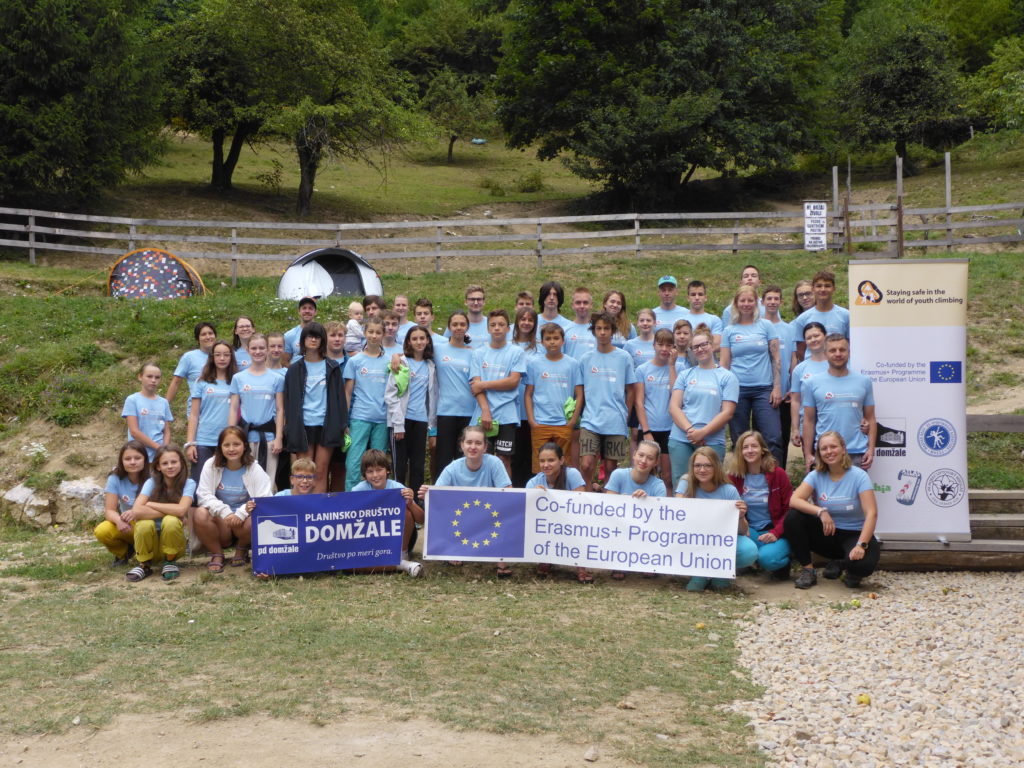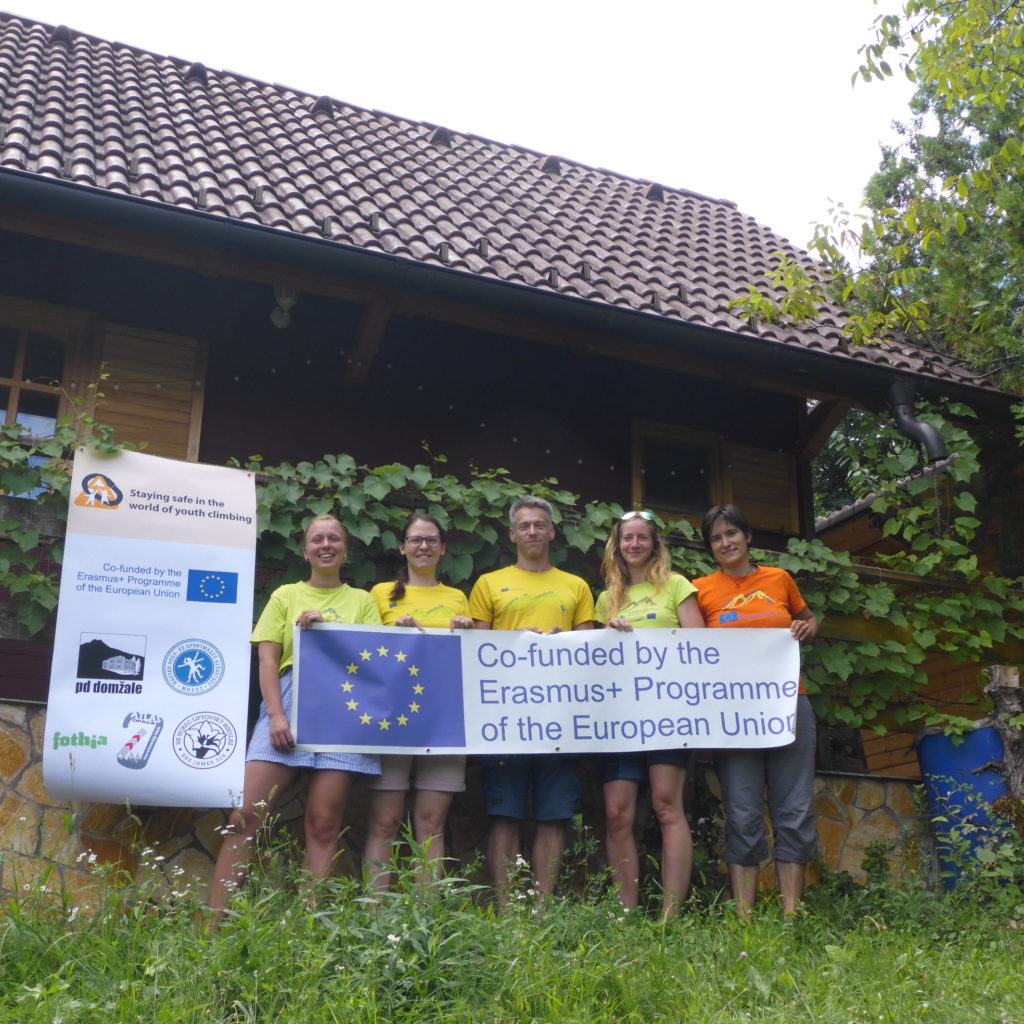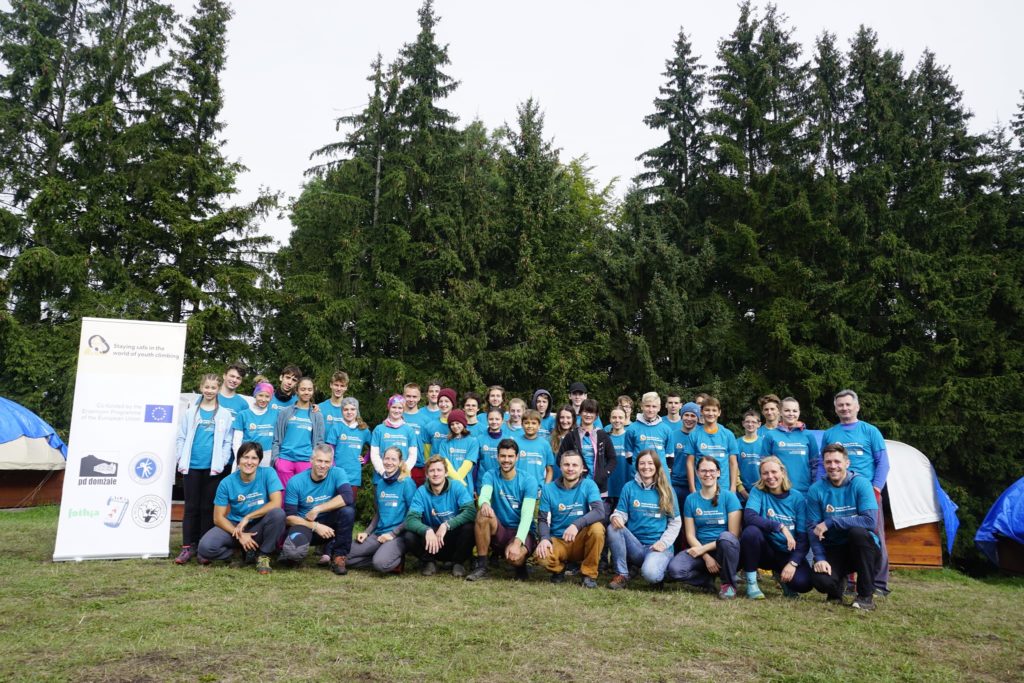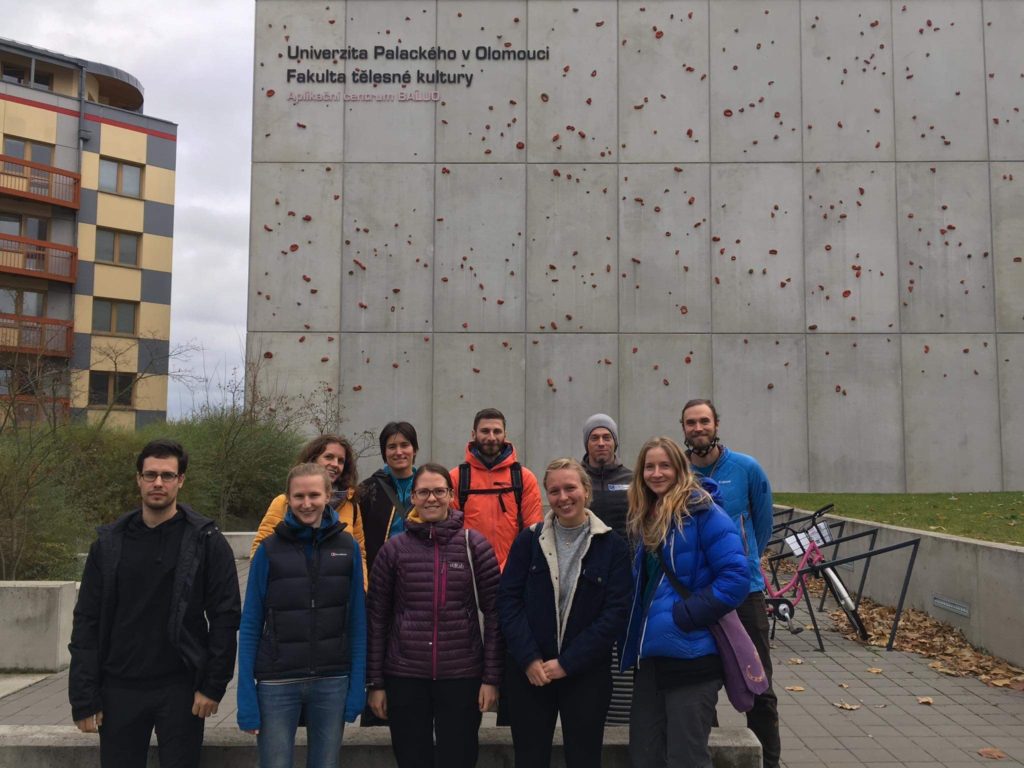After two years the project “Staying safe in the world of youth climbing” has finished. This article is just a summary of our work, a more detailed report is attached at the bottom.
IMPLEMENTED ACTIVITIES
Throughout the project, we implemented many activities. The main ones were five Transnational Meetings, one in every country of Project Partners. Two of these meetings were Youth Climbing Camps and the other three were Smaller Transnational Meetings, where experts shared their practices, experience, and knowledge concerning the meeting’s objectives.
Separate detailed reports for every meeting:
We conducted the analysis of the current state of the climbing, regarding children and youth, in the countries of the Project Partners (Slovenia, Slovakia, Croatia, Czechia, and Hungary). This analysis helped us to compare the differences and similarities in the functioning of our clubs and to expose some of the biggest issues the clubs might be facing.
Summary analysis and national analyses:
PARTICIPANTS IN THE PROJECT
Throughout the project, Project Partners sent 118 participants to the mentioned five Transnational Meetings. Out of that, 64 were children and youth under the age of 18, and the other 54 were adults.
OBJECTIVES AND RESULTS
The main objective of the project was safe participation in youth climbing, where safe means both technical knowledge and knowing how to train correctly, stay healthy and avoid injuries. We recognized key factors influencing the development of young climbers and specified the age-specific stages of this development. We gathered all this knowledge into the guidelines, that cover different subjects regarding age-appropriate training. They can be used as a base for climbing coaches when preparing either technical content or training programs for youth, regardless of the type of climbing.
Guidelines for youth climbing: https://drive.google.com/file/d/1Qt33VI5Y_NBPDKHrHrPCPZkok_UKKio_/view?usp=sharing
Appropriate training sessions for children and youth have to consist of carefully chosen exercises. We prepared some exemplary videos, as one example of using additional non-traditional learning methods.
Link to videos: https://www.youtube.com/playlist?list=PLAIOWpkXxaZCEYn5Qg5HxhjJk7qjkIKyl
Transnational climbing camps presented the opportunity to introduce different types of climbing to participants, which they usually would not get familiar with. As the 5 countries widely differ in their topography and geology, participants experienced very different climbing techniques and climbing cultures, which would not be accessible solely on a national level. Participants experienced a major improvement in their climbing, social and English skills.
DISSEMINATION
The project webpage was set up and maintained and updated throughout the project. On the webpage, the information and news on the project itself were distributed. To ensure the future impact of the project, the project’s webpage will be kept online even now after the project has ended and will be regularly updated with any future collaborations between the partners.
Project’s webpage: http://staying-safe.pdd.si
Project’s Facebook page: https://www.facebook.com/profile.php?id=100071669840647
CONCLUSION
By involving partners from Slovenia, Croatia, Hungary, the Czech Republic, and Slovakia, we had the benefit of sharing practices, experience, and knowledge concerning the project’s objectives from a number of countries with different traditions and educational systems regarding climbing. That allowed us to come up with better solutions than we could solely on a national level. The international relations built during this project will be the basis of any future collaborations between Project Partners and other climbing clubs and associations, whose main focus is youth climbing.
We didn’t experience a lot of problems or difficulties in the project. Most of them were related to the pandemic of COVID-19. Other than that, the project was implemented according to the plan and the goals set in the project plan were fulfilled.




